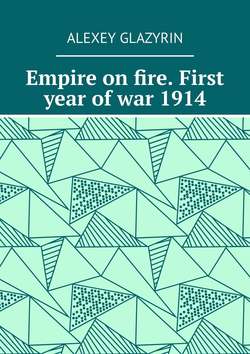Читать книгу Empire on fire. First year of war 1914 - Alexey Glazyrin - Страница 2
Prologue
ОглавлениеThe image of the main character of the book is collective, many young people from peaceful life voluntarily stepped into the trenches of the First World War, guided by a love of the Fatherland. Including future world-famous scientists.
In honor of Sergei Vavilov, a crater on the moon was named, several scientific vessels, postage stamps were issued, monuments and plaques were erected…
But the best monument to him was a small photo album “I Look at the War”, released on his 120th birthday and immediately became a bibliographic rarity due to the tiny circulation. The album contains diary entries, poems, drawings and photographs of Ensign Vavilov, made on the fronts of the First World War.
And no matter what they say about Russian military officers of those dashing years, but three objects on the map of the Moon are named after the junior officers of the Russian army – ensigns Sergei Vavilov, Vladimir Zvorykin and Yuri Kondratyuk.
In total, during the First World War, in Russia, about 220 thousand people were promoted to officers, including 78,581 people from military schools and 108970 from ensign schools, that is, more than three years more than in the entire history of the Russian army before the first world war.
Considering that immediately after the mobilization, before the start of the release of wartime officers, the number of officers was approximately 80 thousand, the total number of officers will be 300 thousand.
From this number, the losses incurred during the war years should be subtracted. The direct combat losses of those killed, died from wounds on the battlefield, wounded, captured and missing amounted to more than 70 thousand people, 71,298, including 208 generals, 3368 headquarters officers and 67772 chief officers, out of the last 37,392 warrant officers.
In many cases, wartime officers commanded companies and, in many cases, battalions, these were often boys who had been high school students and students yesterday, many of whom had become lieutenants and staff captains, and even captains, as lieutenant colonels by the time of the February coup. officers issued in wartime, as not having received a complete military education could not be made. Over the entire period of the war, the officer corps was almost completely replaced, from 300 to 500% of officers were replaced in infantry units, that is, from three to five times the officers changed in different combat units, from 15 to 40% in cavalry and artillery
Such data are given in the statistical directory “Russia in the World War of 1914—1918 in Figures”, published already in Soviet Russia in 1925.By February 1917, the officer corps included the majority of educated people in Russia, since almost all people who had education in the volume of a gymnasium, a real school and equal educational institutions and who were fit for health reasons were promoted to officers.
Since the traditions of military education in military schools have not been interrupted, it cannot be said that officers will radically change in morale and attitude to their duties. The vast majority of wartime officers performed their duty no less sacrificingly than regular officers, and were proud of their belonging to the officer corps. As one of them recalled: “Just think that most of us were national teachers, small servants, poor merchants, wealthy peasants… became” your nobility “… So, it happened. Now we are officers… No, no, and squint your eyes on the epaulette. We see the soldiers coming towards us from afar and jealously watch how they salute.”
